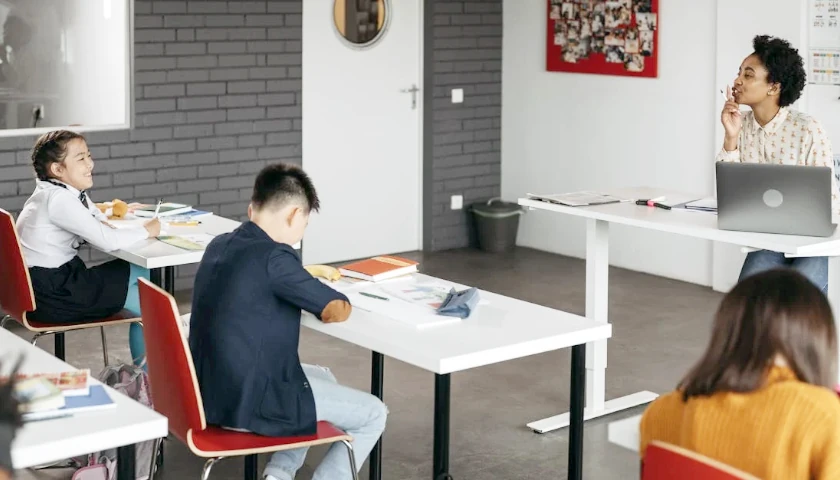by Brendan Clarey
An education organization that administers a nationwide assessment has found that students are still not performing as well as they were immediately before the COVID-19 pandemic and that students’ achievement gap worsened in the 2023-24 school year as compared to before COVID.
NWEA, which issues the Measures of Academic Progress, said in a report this week that some middle school students are still an entire school year behind where they were before the pandemic in almost every grade as schools are slated to run out of federal relief this fall.
The organization estimated that eighth-grade students would require nine months of additional schooling to reach pre-pandemic achievement levels in reading and 9.3 months of extra schooling to reach the same in math.
The report found that younger students required less schooling to catch up, but on average students were almost an entire semester behind where they were before the pandemic lockdowns required schools to scramble, sending students online.
“The average student will need the equivalent of 4.8 additional months of schooling to catch up in reading and 4.3 months in math,” the report’s summary reads. “These estimates are similar to last year for math, and larger for reading.
“The gap between pre-COVID and COVID test score averages widened in 2023–24 in nearly all grades, by an average of 36% in reading and 18% in math,” the report found, countering claims that students have bounced back after the academic upheaval.
The report found that in math and science “initial rebounding in 2021–22 has largely been undone by below-average growth in both 2022–23 and 2023–24.”
Minority student achievement were disproportionately impacted by the pandemic’s effects on achievement loss, according to the report and its authors.
“Achievement disparities that predate the pandemic have been starkly exacerbated over the last four years, and marginalized students are still the furthest from recovery,” Karyn Lewis, NWEA’s director of research and policy partnerships, said in a news release.
“Pandemic fatigue is real, but accepting a new normal of lower achievement and widened inequities is not an option,” Lewis, who is a coauthor of the report, said. “We must remain committed to using data-driven strategies, providing our schools with the right scale of support, and integrating sustained recovery efforts into our educational framework so we can make lasting change.”
In particular, the report points out that reading achievement in the upper grades has suffered the most, with a 21% decline for sixth-grade students, a 20% decline for seventh-grade students and a 19% decline for eighth-grade students.
“Growth in 2023–24 lagged pre-pandemic trends in all but the youngest cohort of students, falling short of pre-pandemic averages by 1–21% in reading and by 2–14% in math,” the NWEA’s report found. “Similar to what we observed in 2022–23, the most notable departure from pre-pandemic trends is evident in the upper grades in reading.”
NWEA’s leadership said schools need to be spending more time with students to combat learning loss despite the loss of federal funds.
“As millions of students continue to fall behind academically, schools across the country are grappling with an impending ESSER financial cliff as federal COVID relief funds run out this September,” Lindsay Dworkin, NWEA’s senior vice president of policy and government affairs, said in a press release.
“Even as resources dwindle, districts must try to continue investing in evidence-based strategies that have been proven to improve student outcomes: keeping kids in school, providing high-dosage tutoring, and offering expanded instructional time over the summer or after school,” Dworkin said.
– – –
Brendan Clarey is a contributor to The Center Square.






Not to worry. They dumbed down the SAT years ago and are now doing so with the ACT. Pretty soon all of those taking either test will make a perfect score. Problem solved.
Their pre-pandemic performance was nothing ti write home about, either.